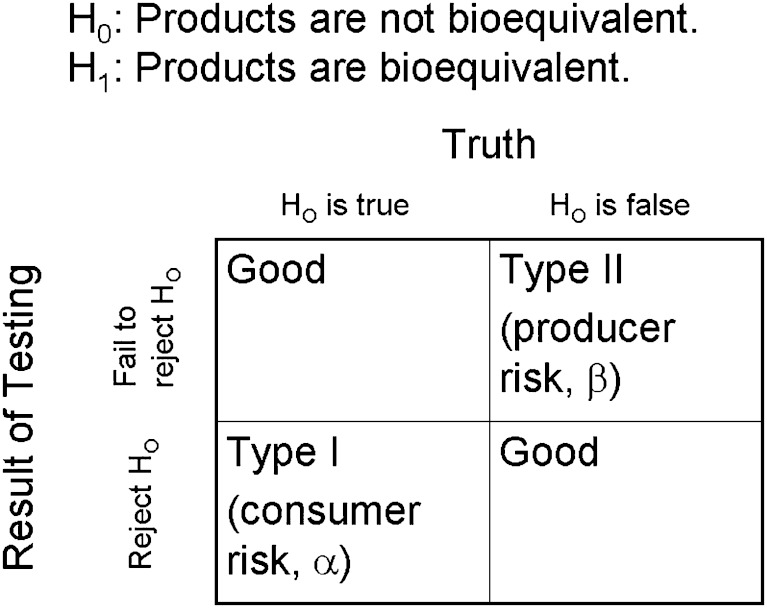Fig. 2.
Bioequivalence, Hypothesis Testing, and Errors. In BE testing, the null hypothesis states that products are not BE, while the alternate hypothesis states that products are BE. Type I error occurs when products are erroneously concluded to be BE when they are not BE. Type I error represents a risk to the consumer (i.e. a health risk to the patient). Type II error occurs when products are erroneously concluded to be not BE when they are BE. Type II error represents a risk to the producer

